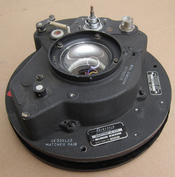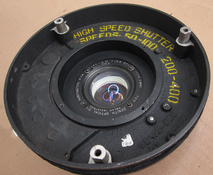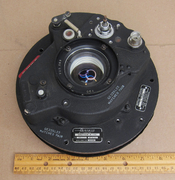This is a super wide angle 6 inch lens (154mm) in high speed shutter for 9 x 9 inch Fairchild camera.
This lens and shutter assembly weighs about 4 lbs and 8 inches in diameter. The lens is about 2.25 inches in diameter.
I was not able to find out much about this lens, but found a photo of the camera it goes to (last photo).
I don't know if the shutter is working or not. I can open and close the shutter by turning one of the couplings, and also the aperture.
The glass is in pretty good shape with minor scratches and some dust inside. Also small scrape on front lens.
$125 plus postage.
This lens and shutter assembly weighs about 4 lbs and 8 inches in diameter. The lens is about 2.25 inches in diameter.
I was not able to find out much about this lens, but found a photo of the camera it goes to (last photo).
I don't know if the shutter is working or not. I can open and close the shutter by turning one of the couplings, and also the aperture.
The glass is in pretty good shape with minor scratches and some dust inside. Also small scrape on front lens.
$125 plus postage.
🛡️ Classifieds Safety Reminder:
Please stay safe when buying and selling. Scams via hacked accounts are on the rise globally.
Best Practices: Always use a verified payment method with buyer protection (avoid "PayPal Friends & Family"). Services like Escrow.com are highly secure. Be suspicious of random unsolicited contact via Private Message. If you see suspicious behavior, please use the Report link on the post immediately.
Best Practices: Always use a verified payment method with buyer protection (avoid "PayPal Friends & Family"). Services like Escrow.com are highly secure. Be suspicious of random unsolicited contact via Private Message. If you see suspicious behavior, please use the Report link on the post immediately.
Attachments
Last edited:







